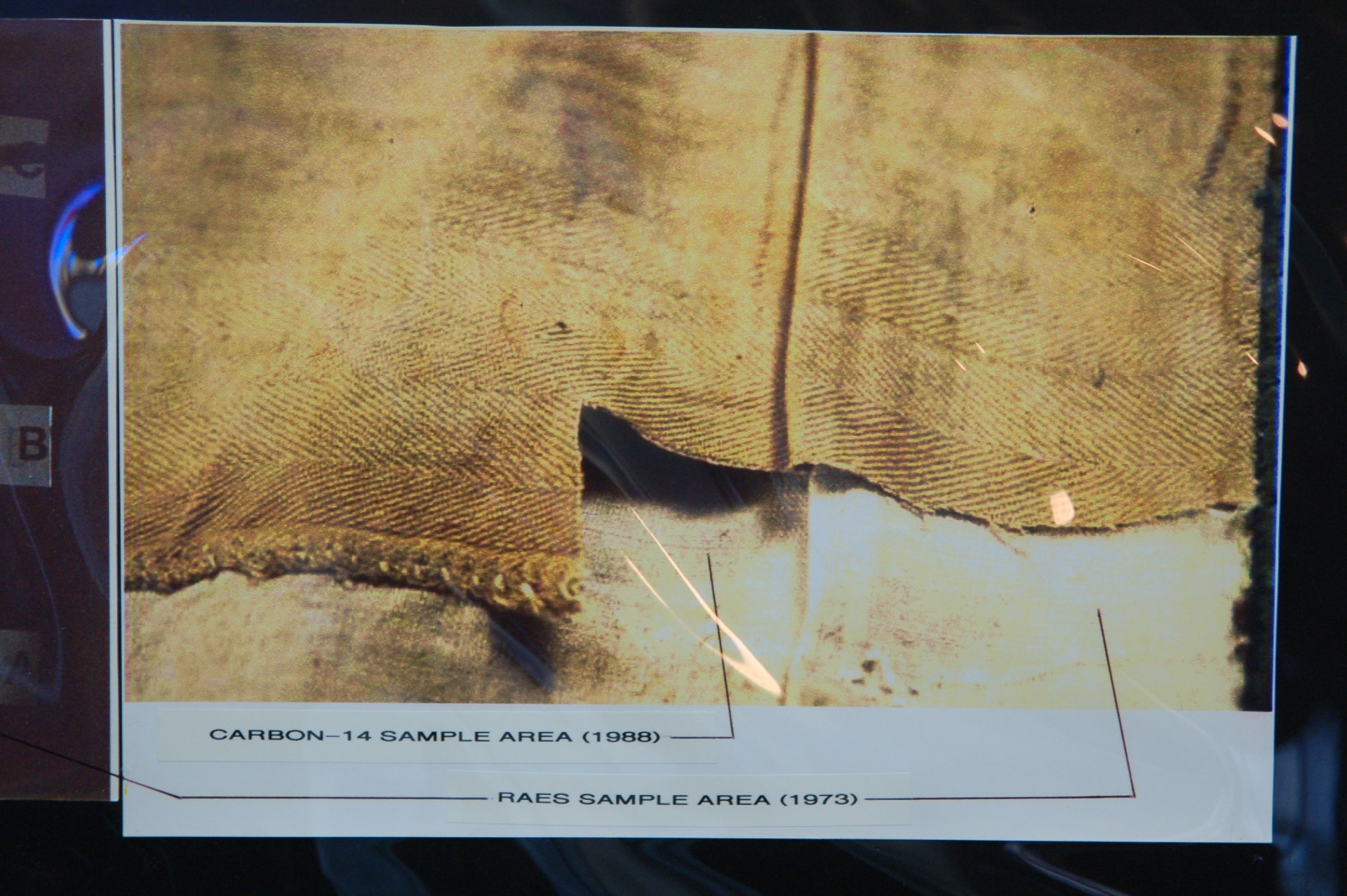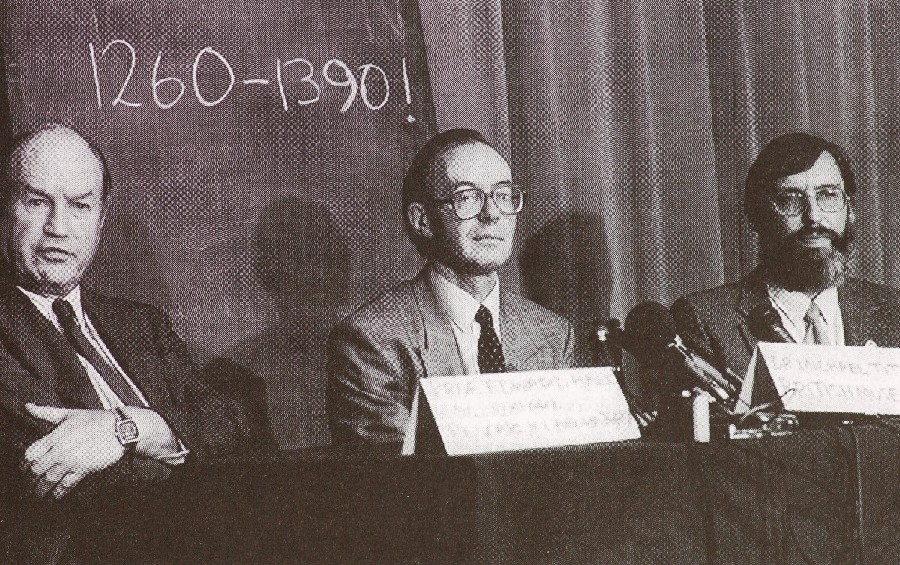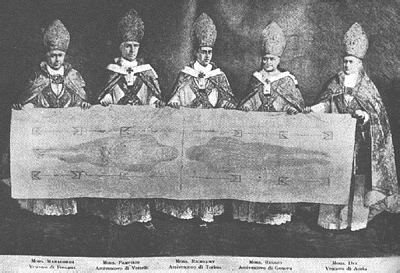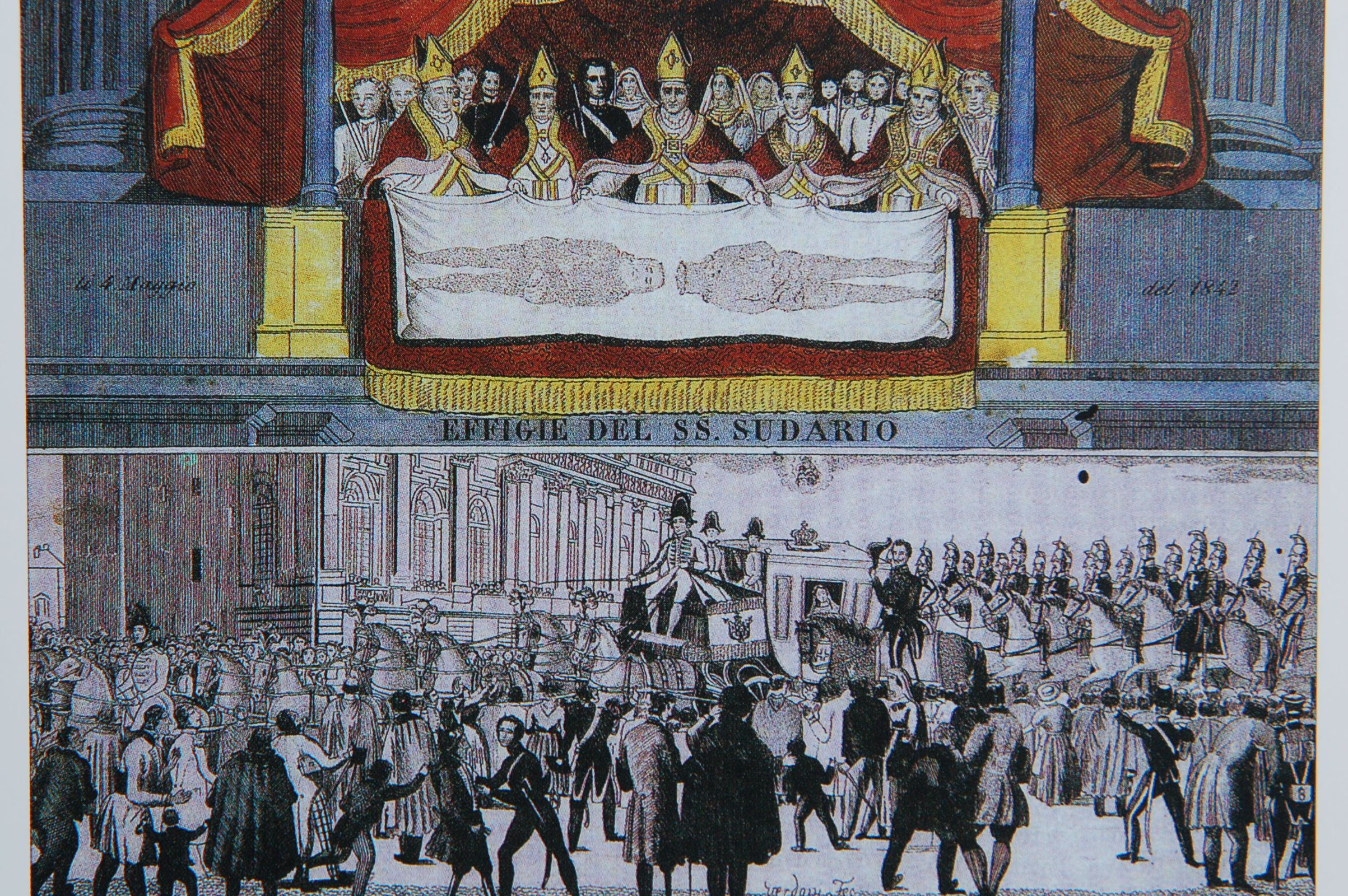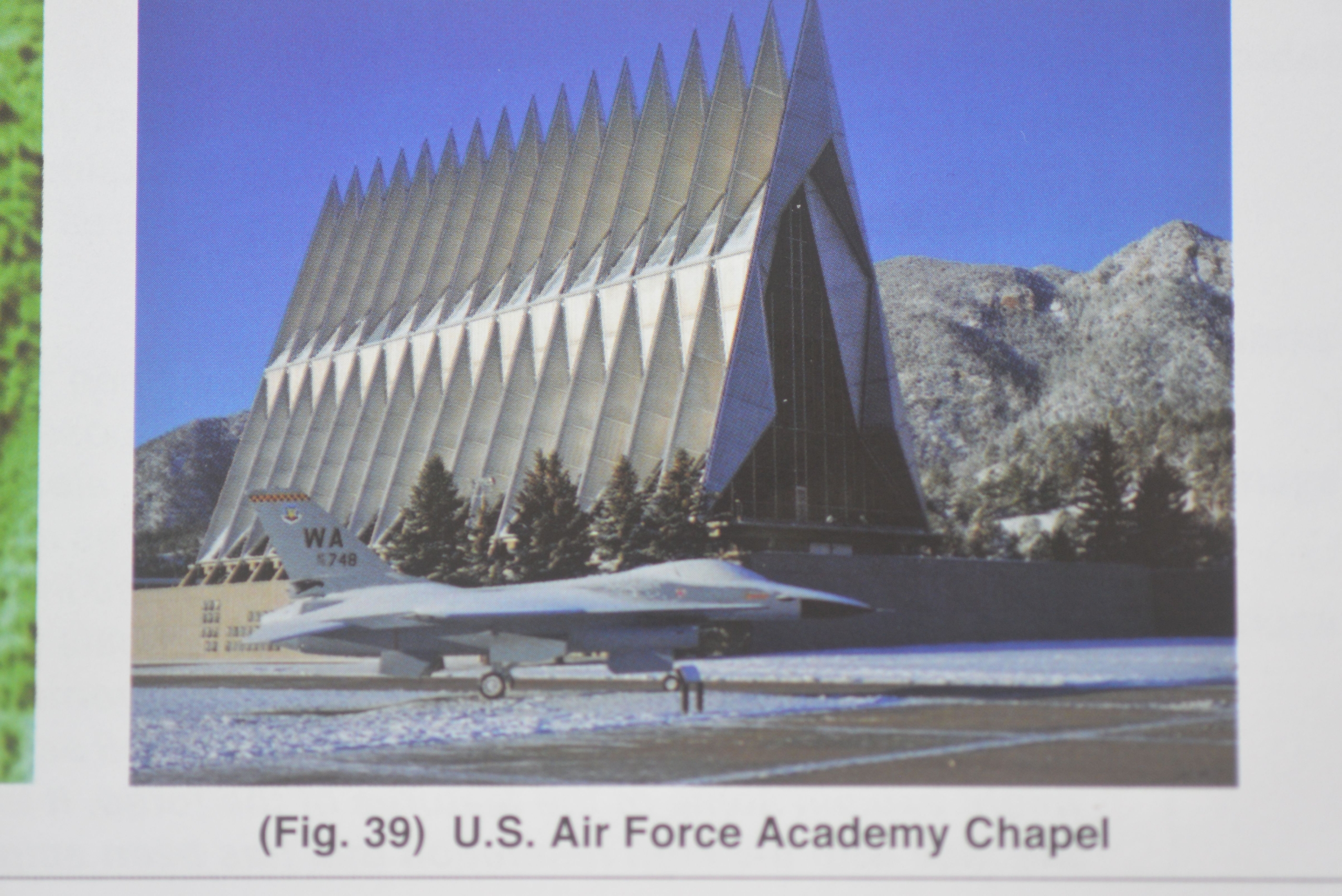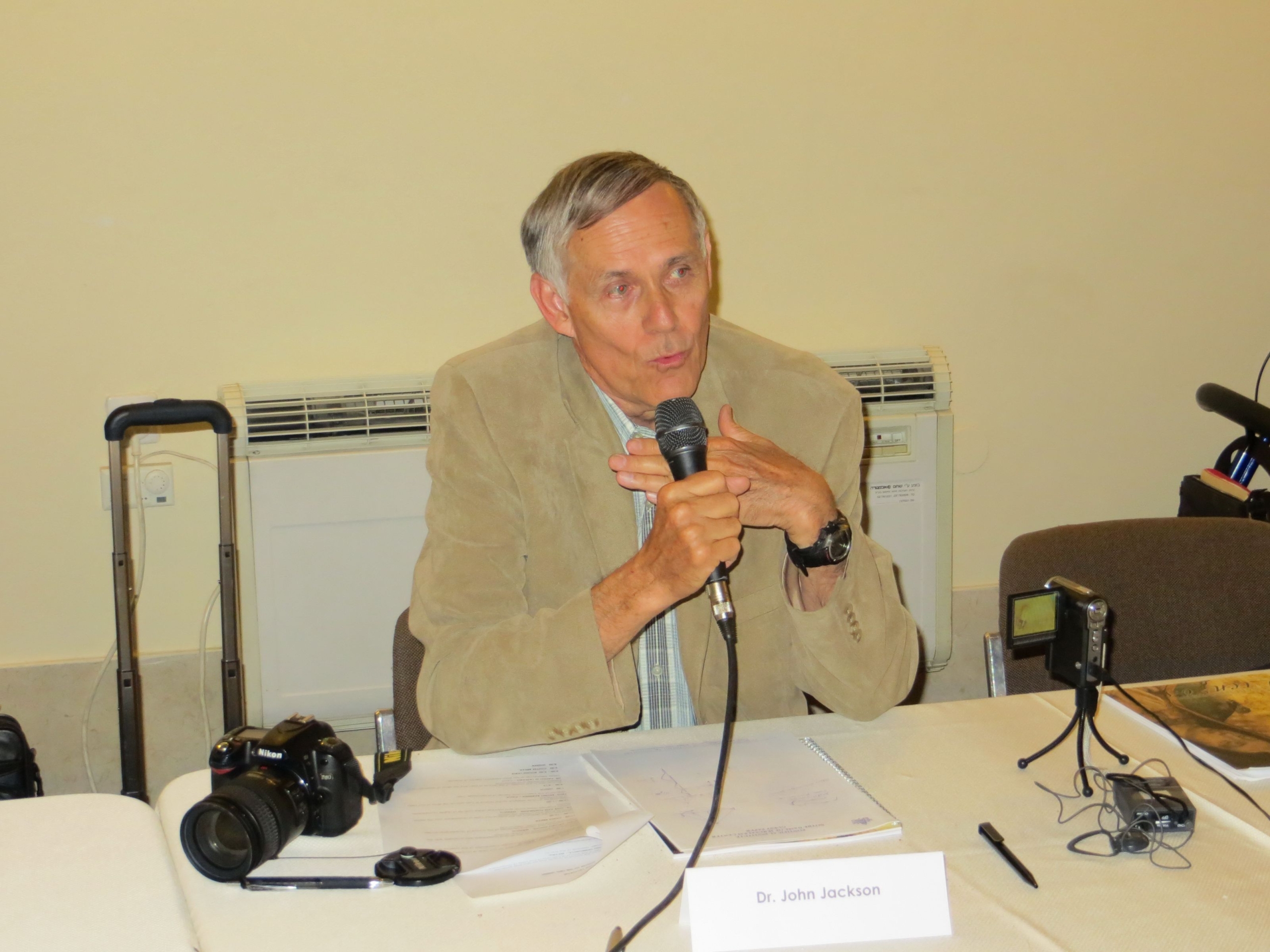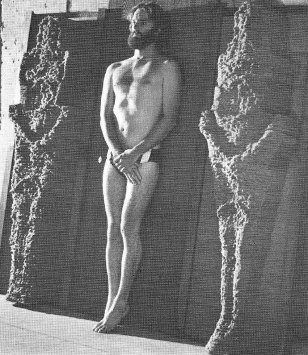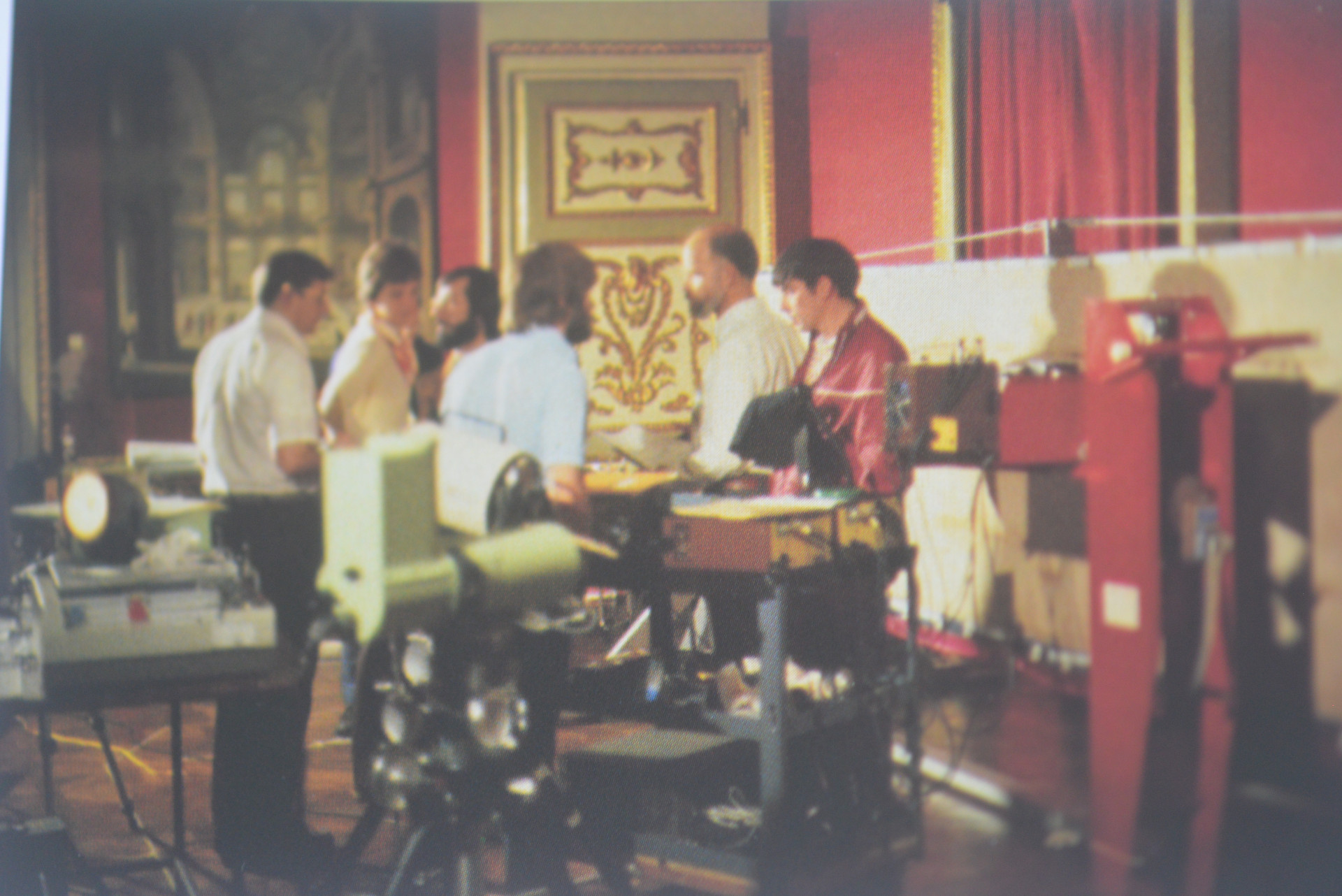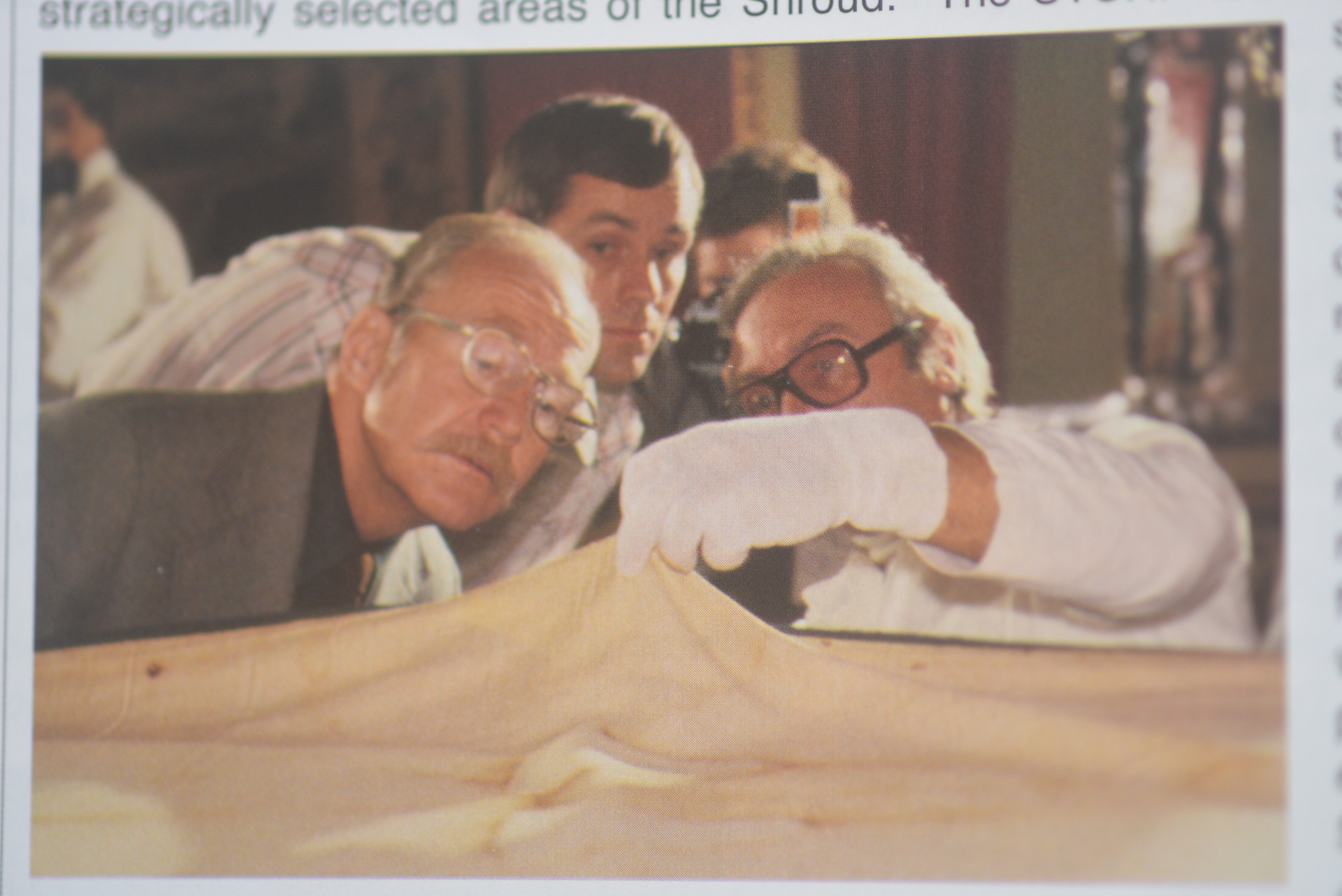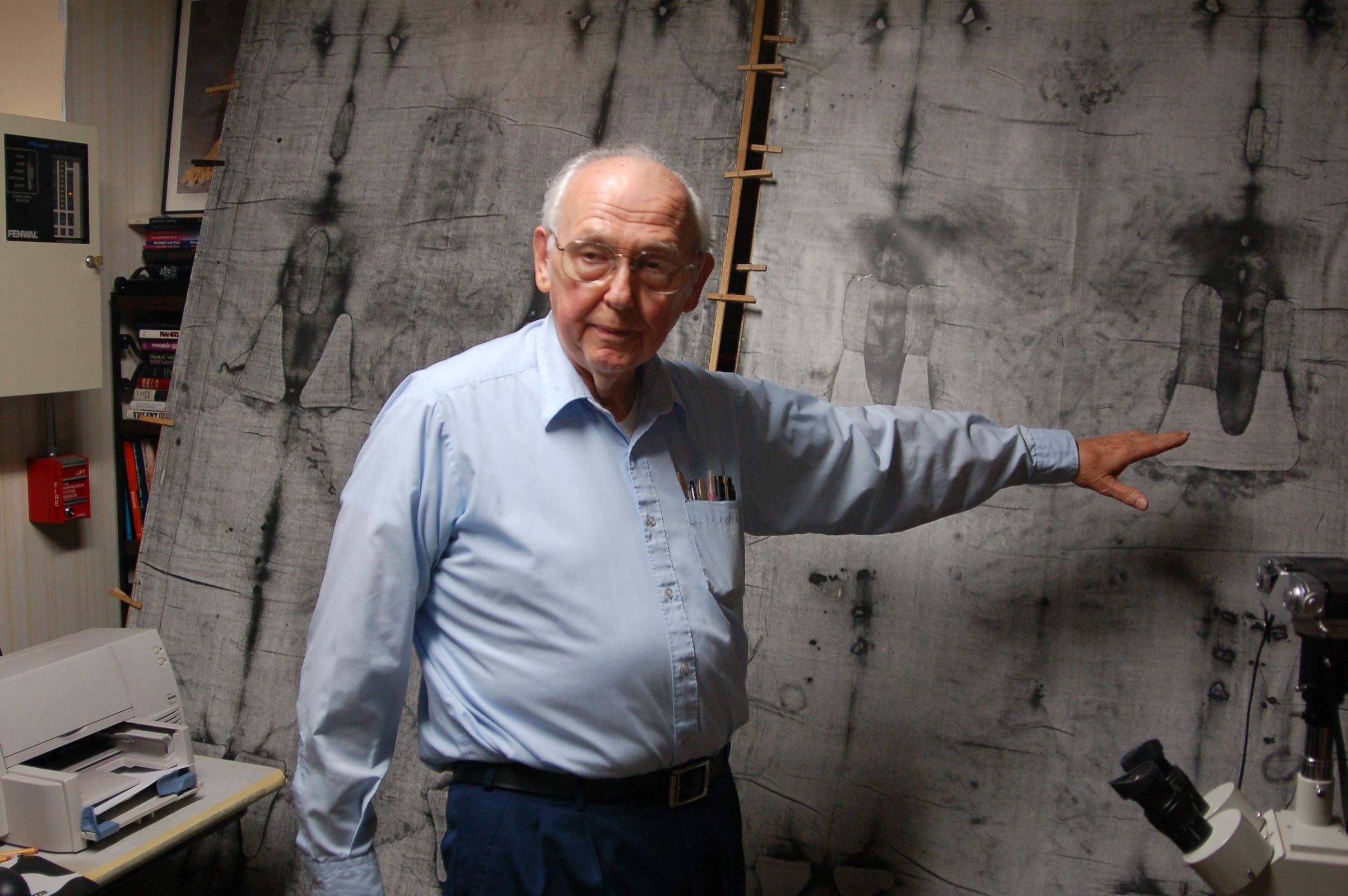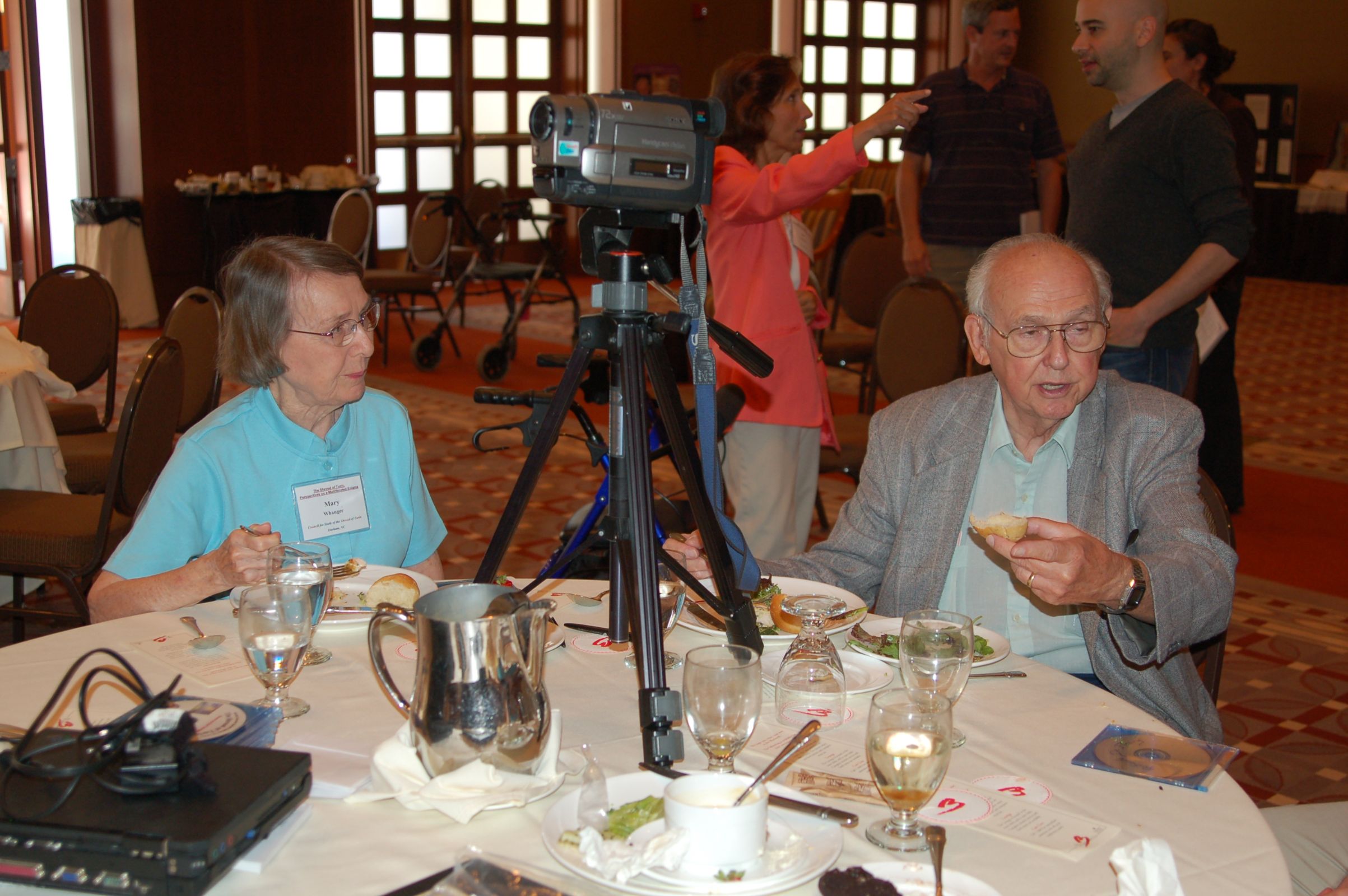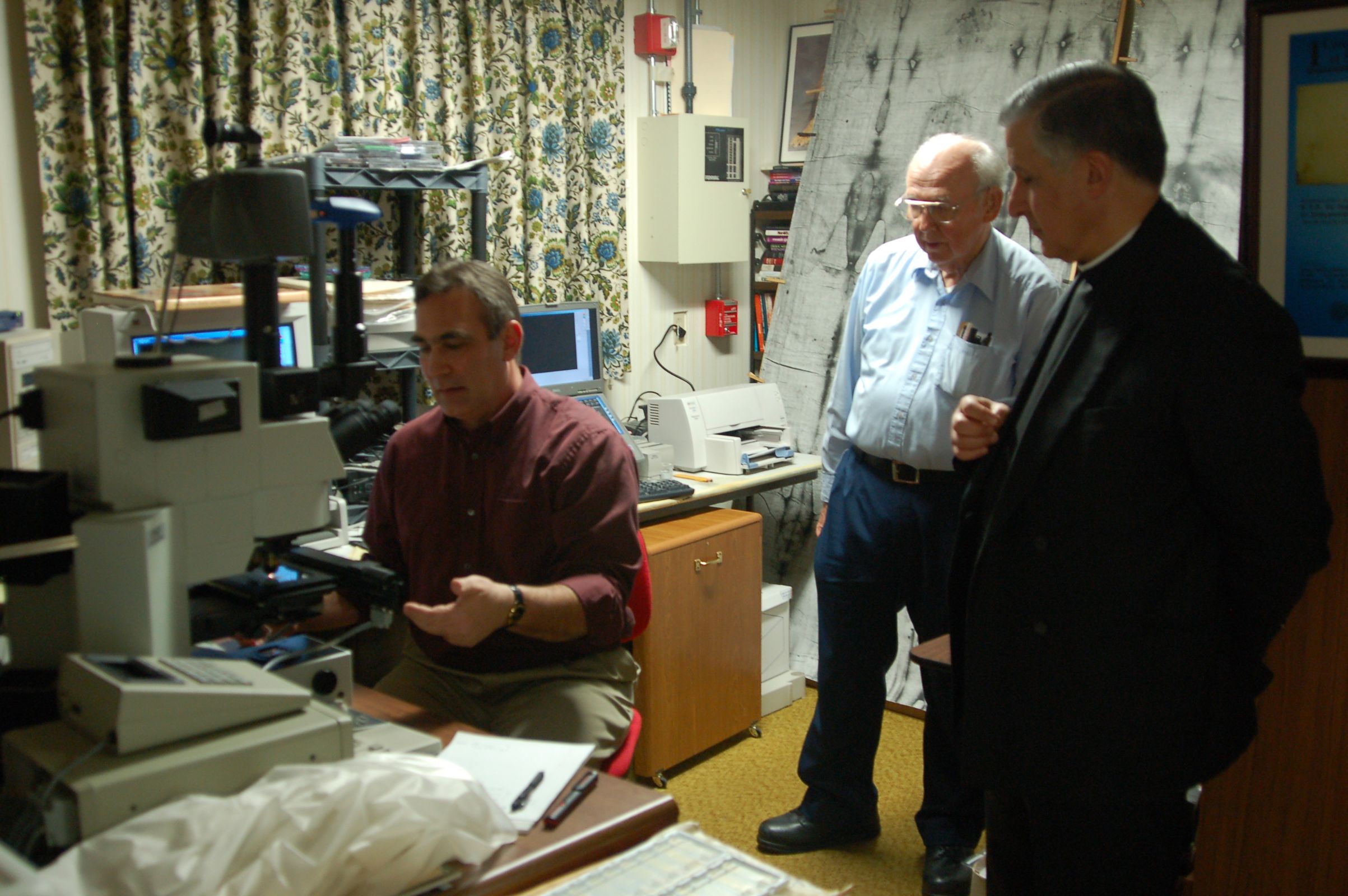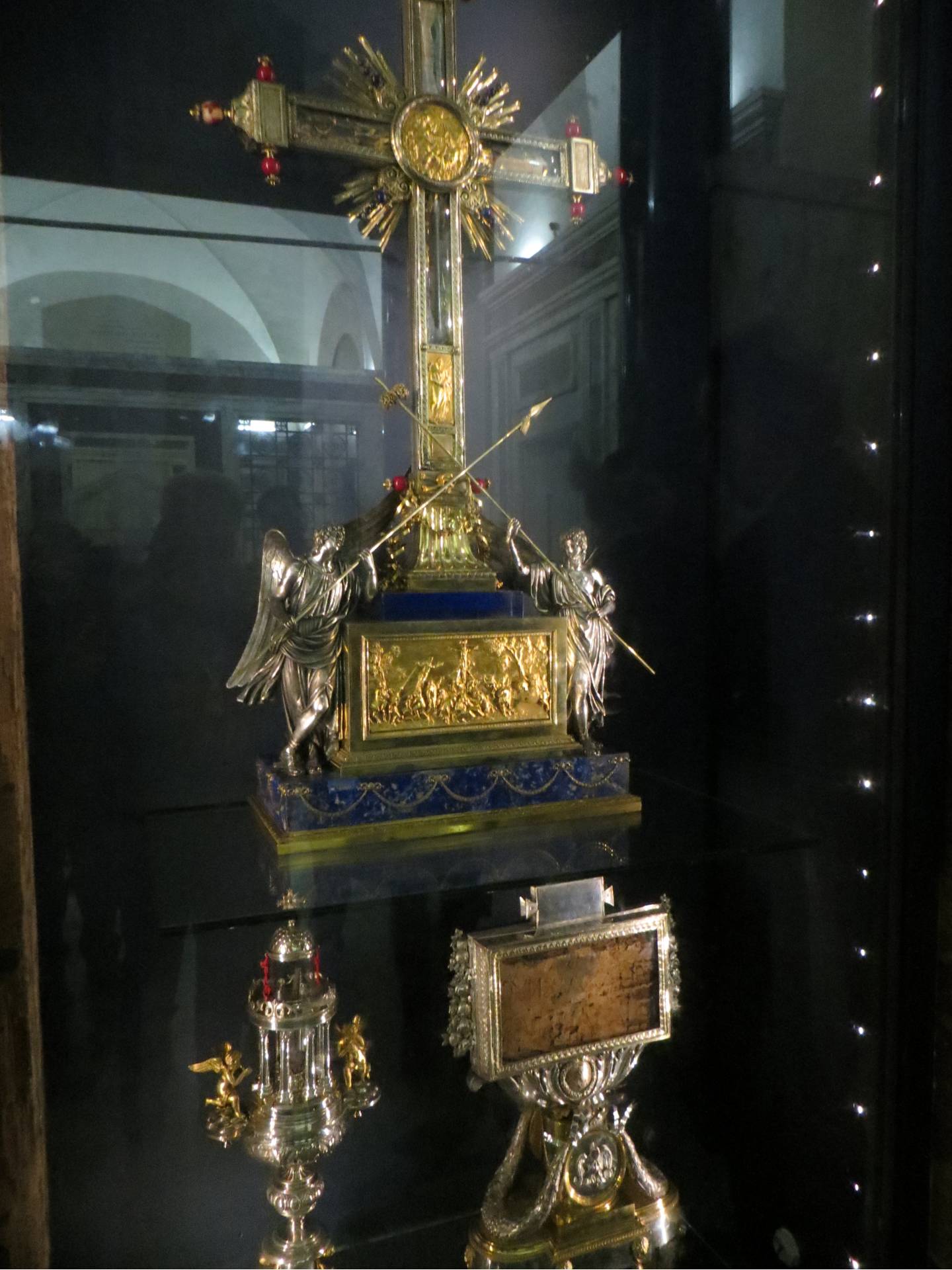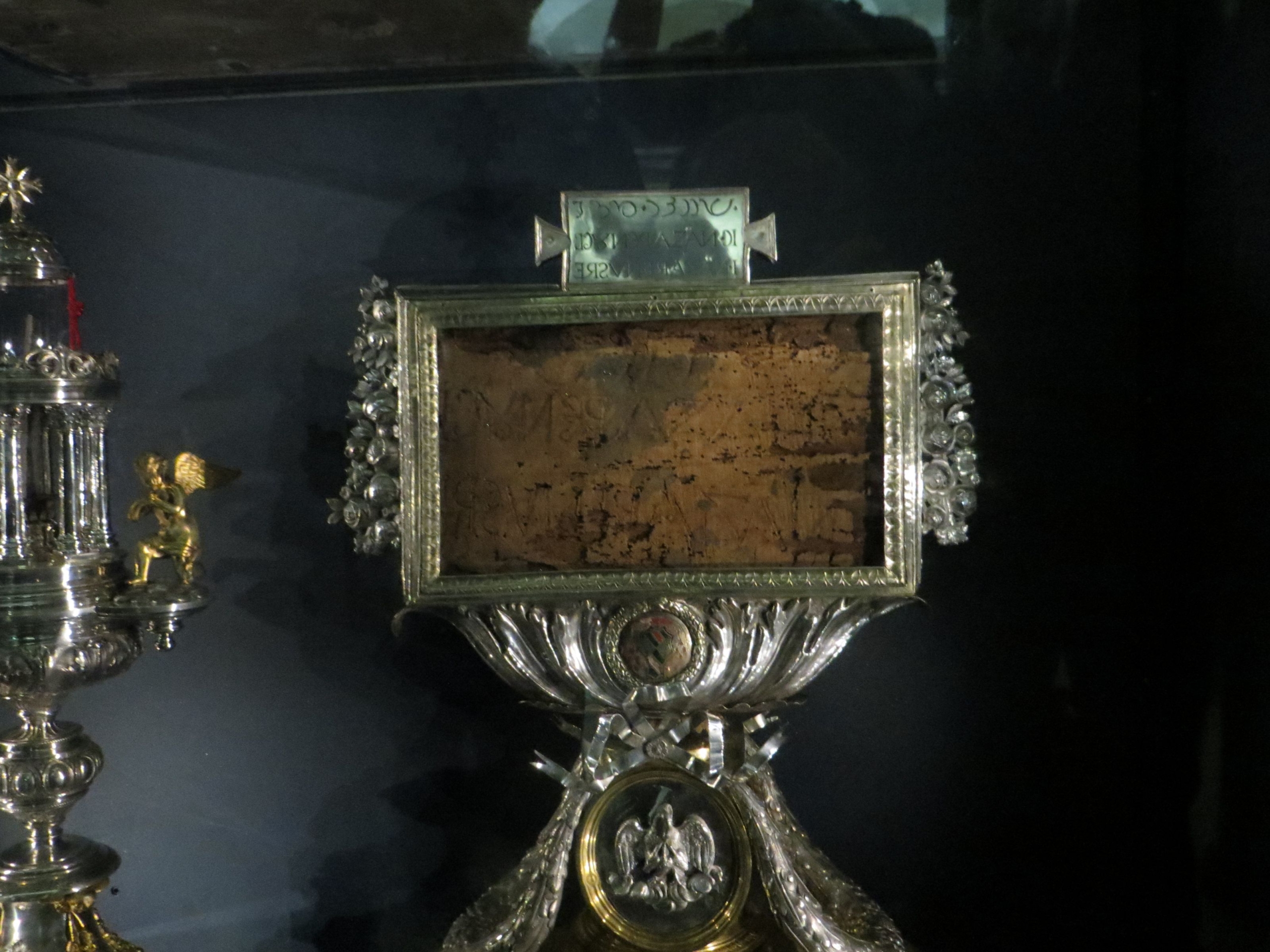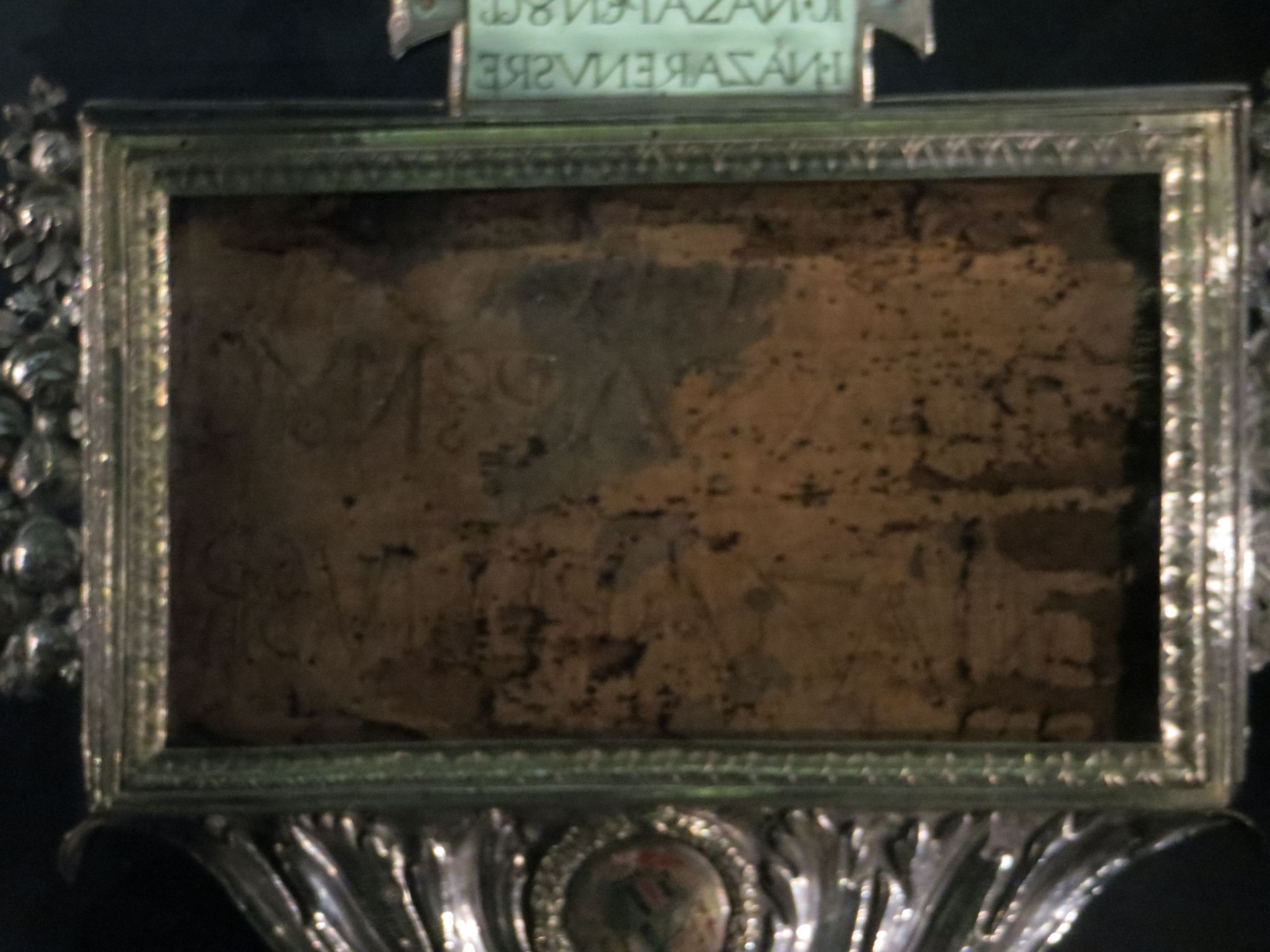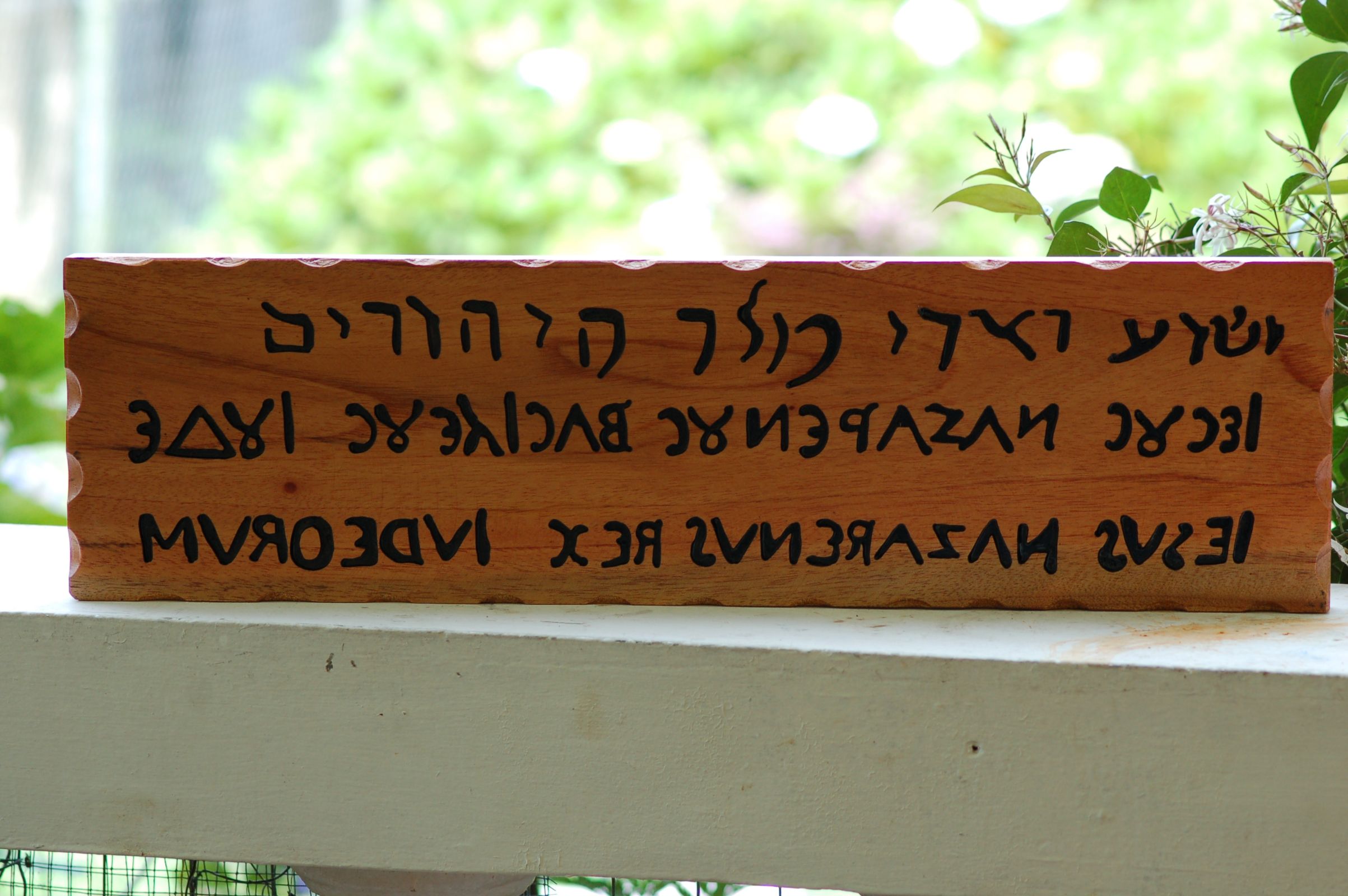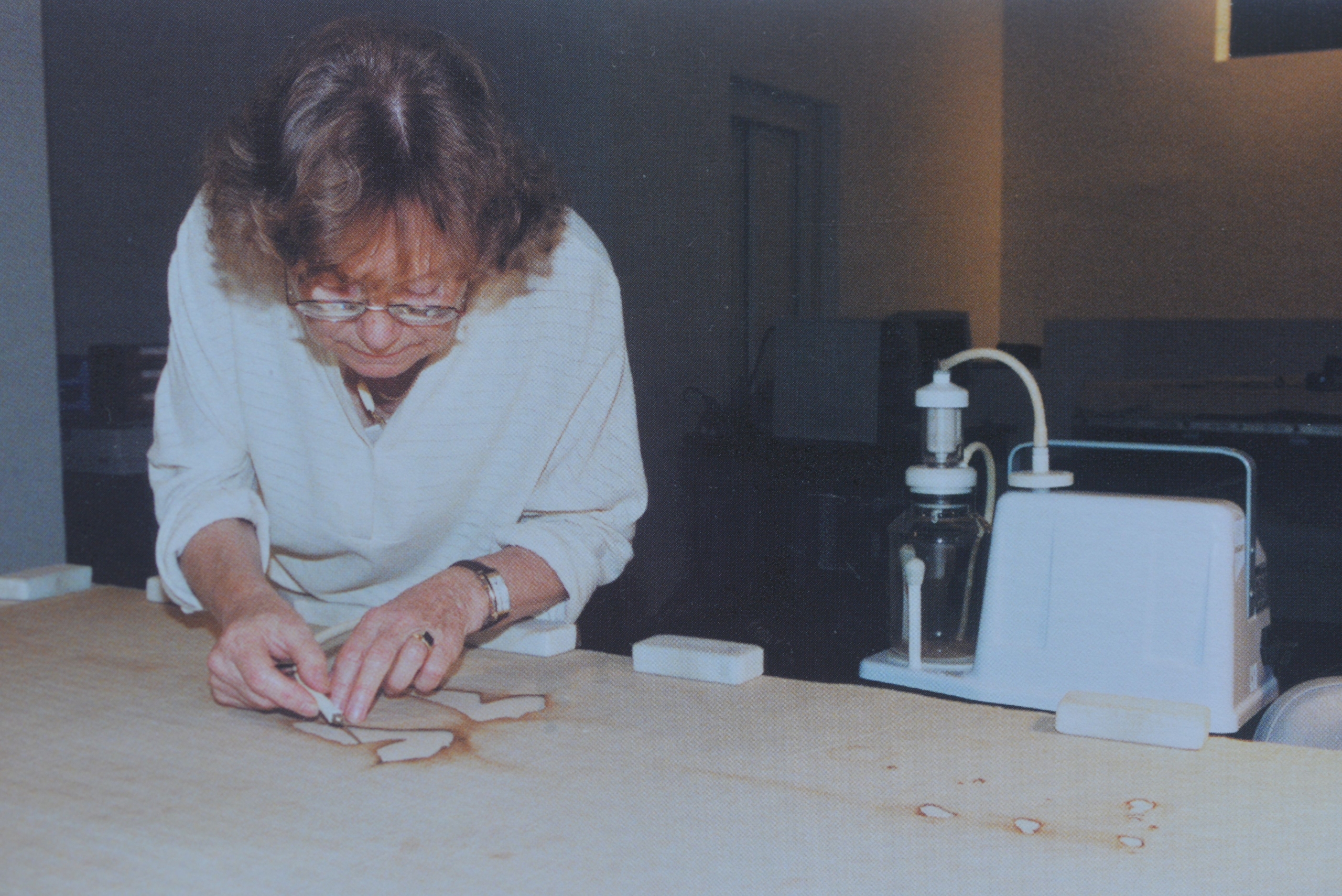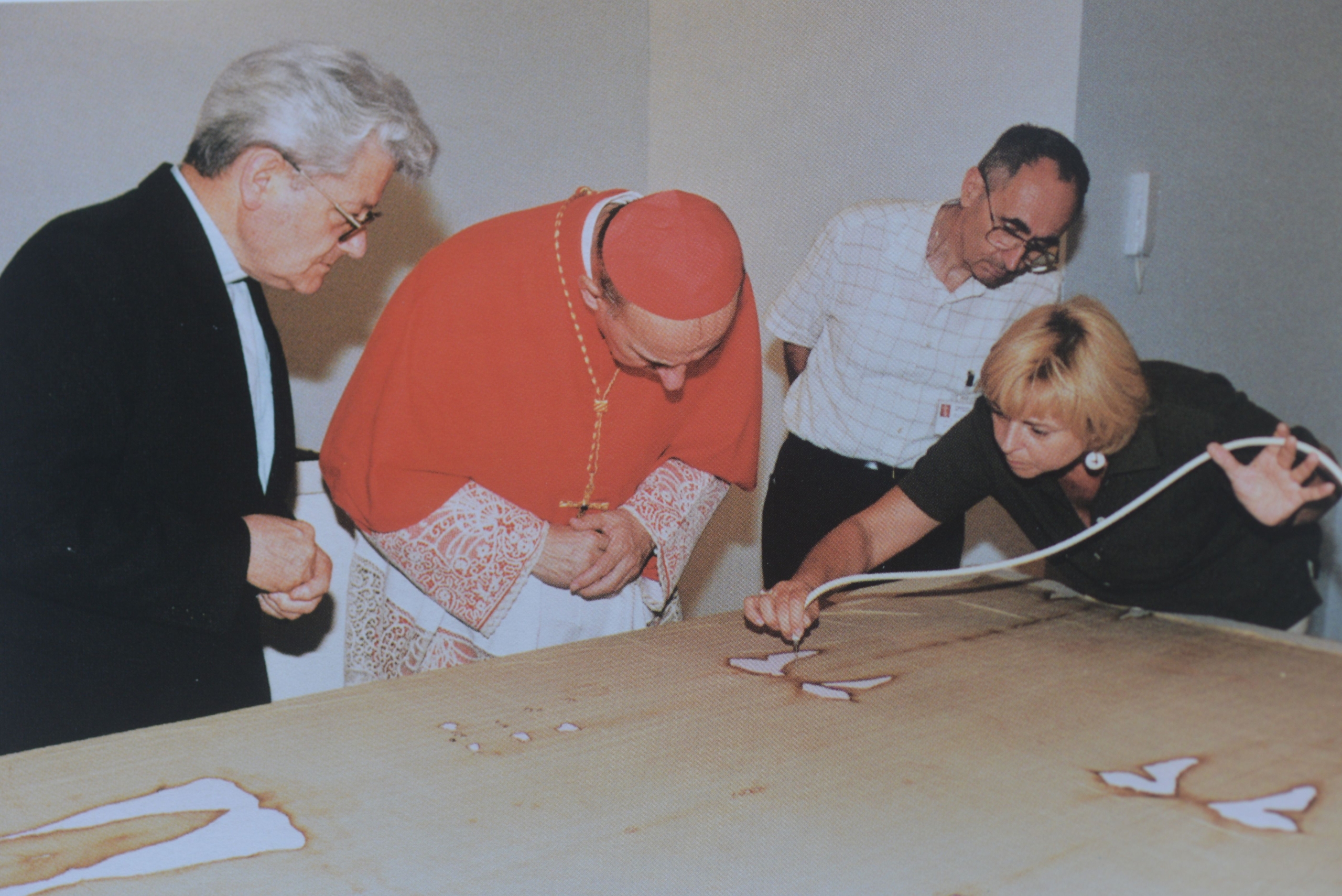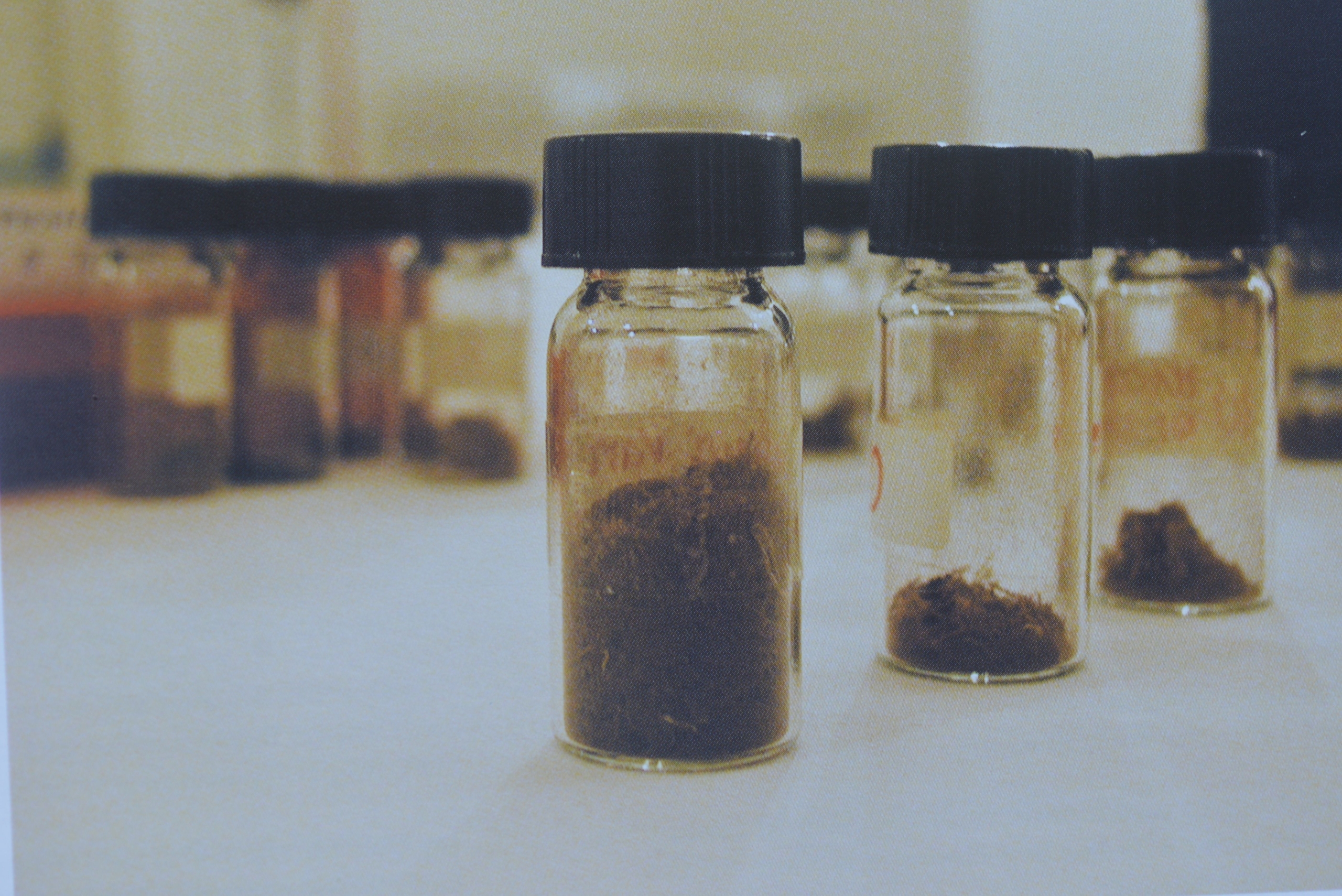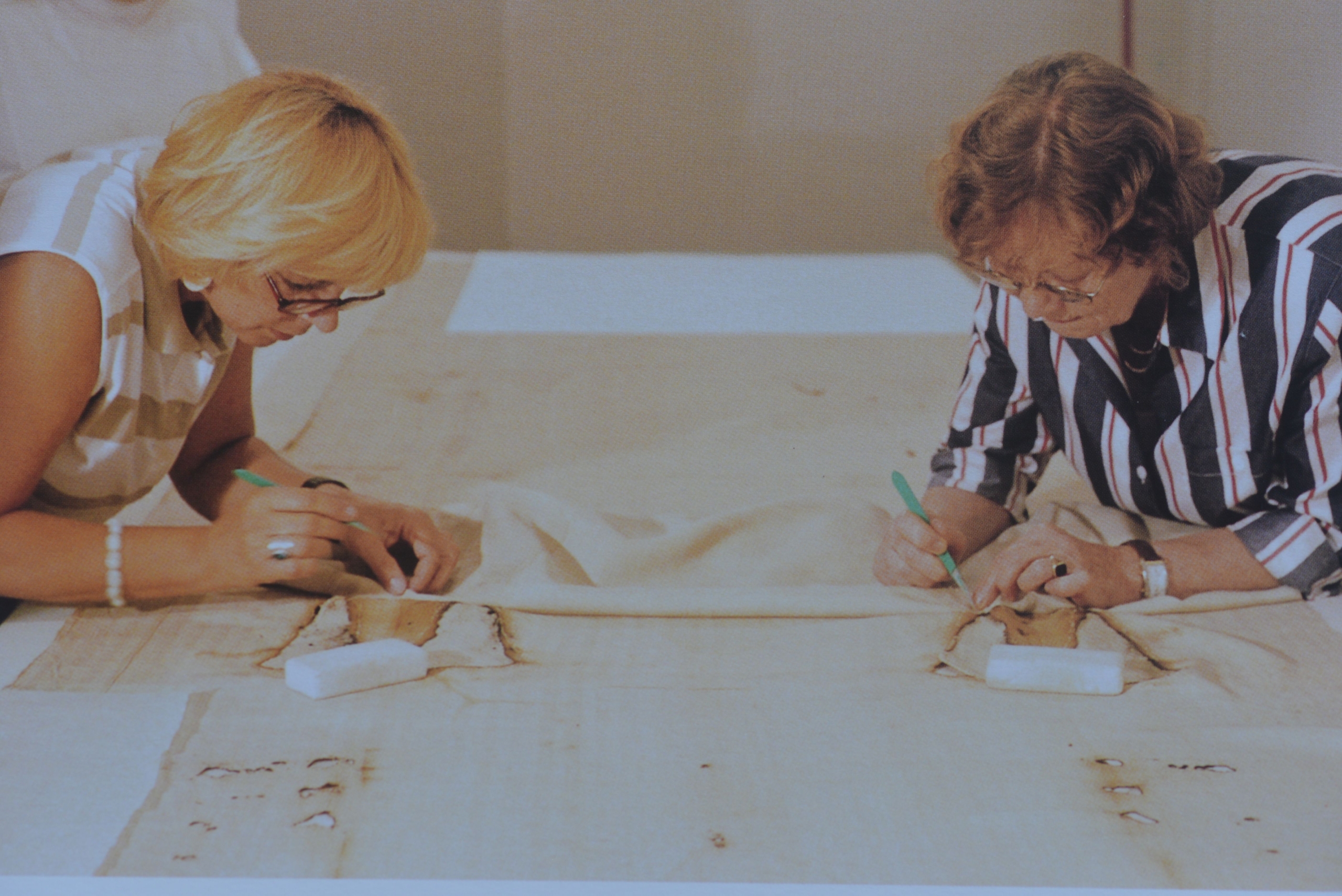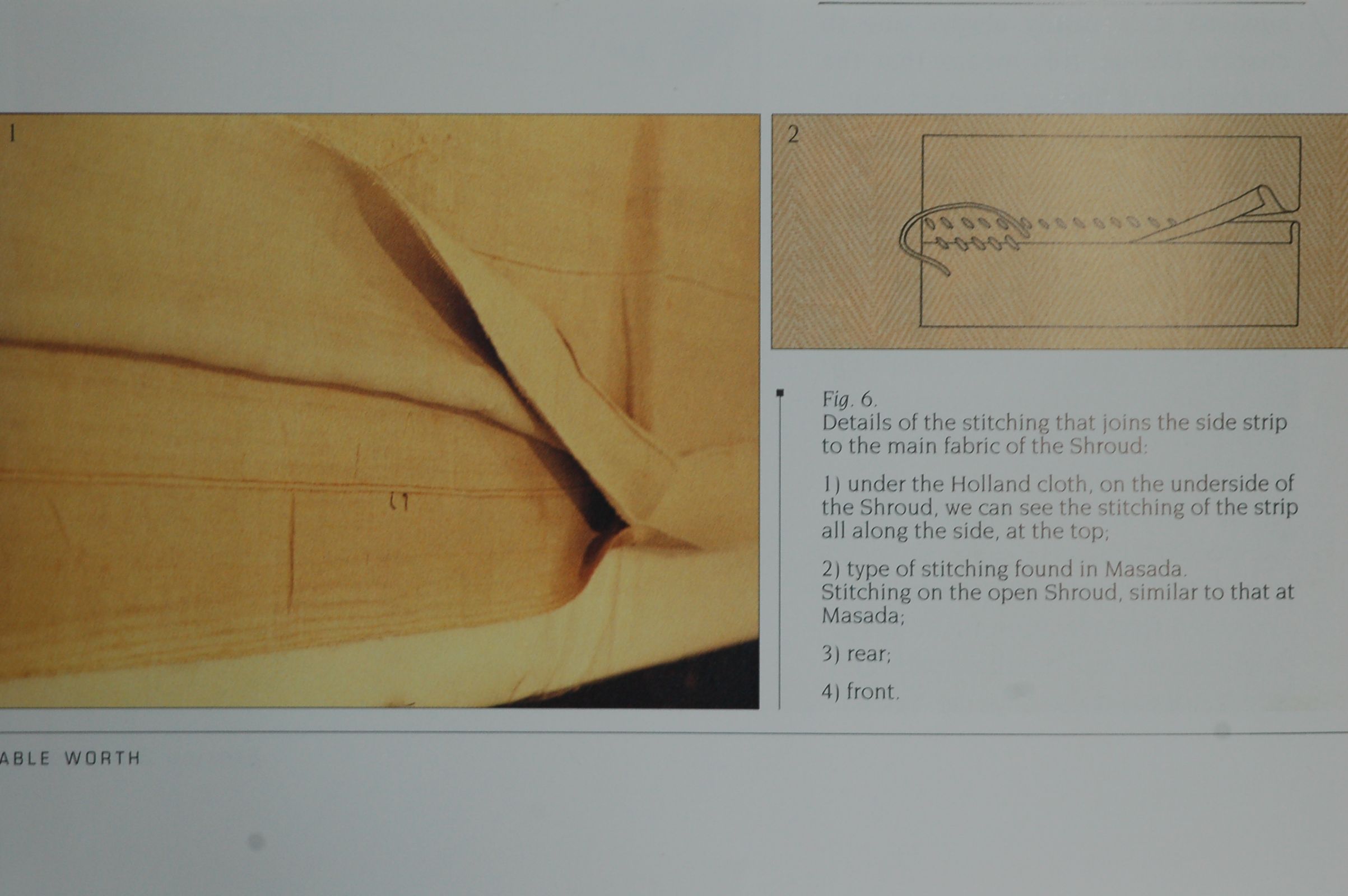THE SHROUD OF TURIN AND ITS RADIOCARBON DATING
MARIA GRAZIA SILIATO
Historian and Archaeologist, Italy
We pointed out on other occasions that as Archaeologists and Historians, we were unable to indicate any object, in any museum or church, which from a scientific point of view, is comparable to the Shroud of Turin.
We know that radiocarbon dating carried out in 1988, which placed the origin of the Shroud in the Middle Ages between 1260 and 1390, is not consistent with the chemical, physical, historical and archaeological data resulting from this famous object.
The Shroud of Turin carries with it a centuries old dramatic story.
IT WAS MANIPULATED MANY TIMES FOR MENDING AND RESTORATION WORKS!
II/IX Century: Various vicissitudes, like escapes, sieges-Jerusalem, Pella, Edessa
944/1205 : Cuttings for relics and restoration works
13 ?? : Fire and repair works
1534 : Patching, fixing, covering by Poor Claires Sisters of Chambery
1694 : Various restoration works by Venerable Sebastiano Valfre
1858 : mending and lining by Giulia Savoya Bonaparte
1973 : mending by the sisters of St. Joseph, Turin
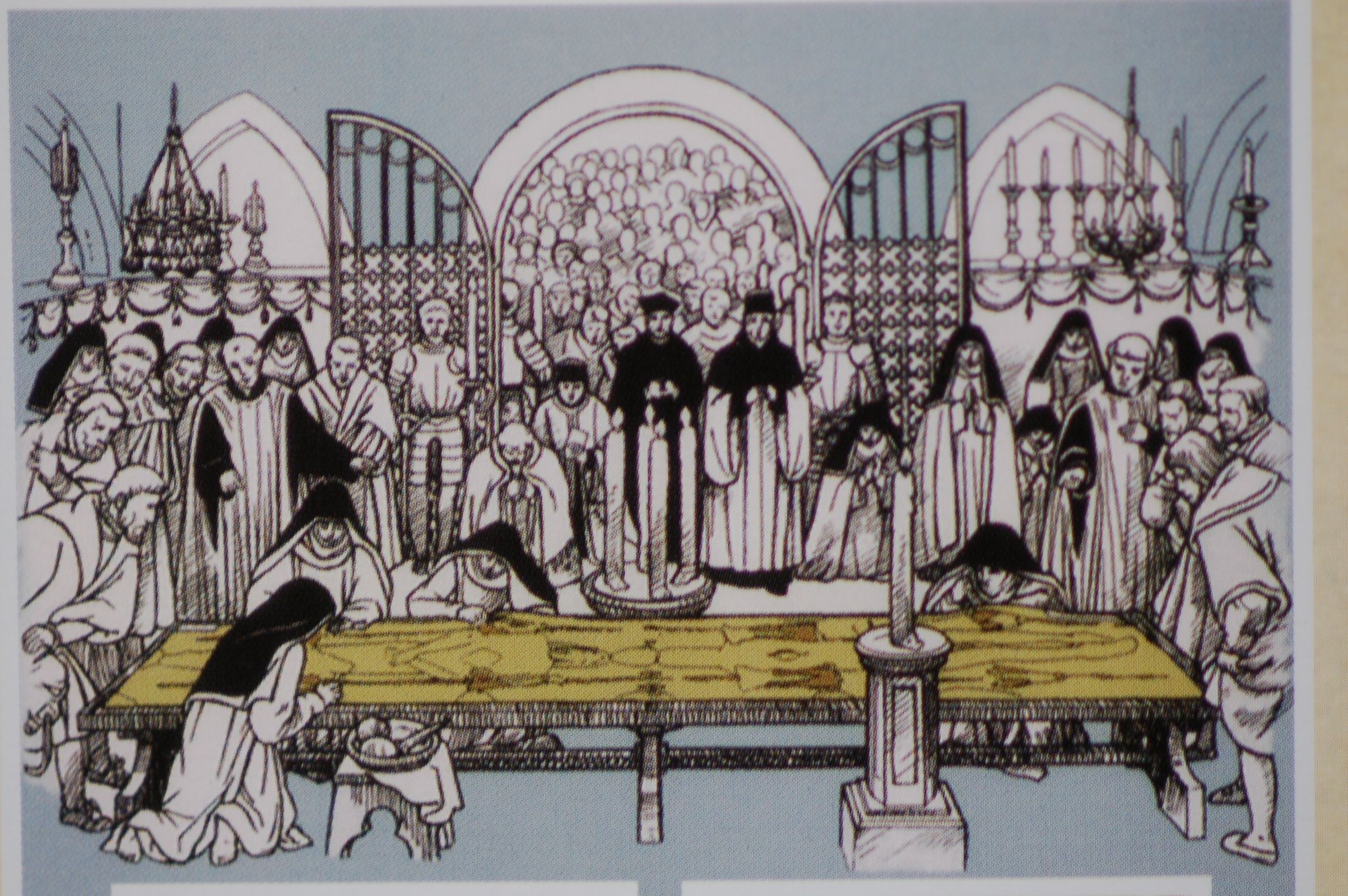
Photo 1. Reparation St. Claire nuns 1534
It seems that the only untreated part of the Shroud was the one bearing the facial imprint.
The quantity and variety of mending stitches observed on the Shroud from the Middle Ages to date, from Edessa to Constantinople, Lirey, Chambery and Turin, is impressive: tacking, hemming, whipping, stringing and mending stitches, and many others.
Add to this an amount of parts, invisible to the naked eye, which were reinforced and maybe remade with the invisible mending technique. The Shroud’s Mediterranean cloth,
because of its very ancient-handcrafted structure, the significant caliber and the thick weaving, perfectly absorbs an intervention of this kind.
In 1978, Mottern, London and Morris performed in Turin radiographic examinations on the region of the Shroud where, ten years afterwards, the sample for C-14 dating would be taken. What emerged was a considerable irregularity of the cloth, which showed low-density and very high-density areas.
The most external band of the cloth, albeit similar in structure, appears to be somewhat connected, or reinforced, to the Shroud’s cloth by restitching. It is a region which has been largely mishandled over the centuries. The cloth was held, exactly on these places according to “exhibiting” and “displaying” techniques. We have a visual, authentic documentation of what happened during these exhibitions, (See picture 1, 17th century
and picture 2, 19th century).
This is confirmed by the way the imprints are exhibited. The face is on the left side. This typical display was traditionally maintained and is still in use today.
These are spine-chilling documents and have certainly not been discovered today. They were universally known when it was decided to choose the part of the Shroud from which the sample had to be taken.
In fact, instead of removing fragments of yarn here and there in order to reach the necessary weight for each of the laboratories, it was decided to cut a piece of cloth. The upper corner, to the left of the person looking at it, was cut, that is, in the spot were RAES had already cut a sample. Therefore, the Shroud’s linen cloth was damaged again in a significant, irreparable way.
We have come to the core of the problem.
At that time, product analyses carried out by experts TIMOSSI and RAES calculated, with good accuracy, the MEDIUM WEIGHT PER SQUARE CENTIMETER OF THE SHROUD’S CLOTH: 1) A. TIMOSSI, expert in textiles 23 mg
2) Prof. G. RAES, Director of the Laboratory of Technology of Textiles, University of Gent
25 mg
It was also calculated with radiographs by MORRIS, LONDON and MOTTERN in 1978,
and the result was the same as the previous ones
3) R.A. Morris, National Laboratory of Los Alamos 25 mg
4) G. RIGGI 20 mg
The means of the four data is: 23.2 cm, and as upper threshold limit, the average weight of 23 mg per square cm can be assumed.
Considering the irregularities of an ancient, handcrafted cloth, and in order to move within safer margins, we have applied a prudential surplus tolerance to the measures indicated.
Let us therefore assume an average weight of 25.00 MILLIGRAMS PER SQUARE CENTIMETER of the SHROUD’S CLOTH.
SAMPLE TAKING FOR RADIOCARBON DATING:
1) According to the official operator in charge of taking the sample, the sample measures 8.1 x 1.6 cm which is 12.96 square cm.
2) In the video showing the taking of the sample, the weight measured on the scales is 478.1 mg.
3) Dividing the sample’s weight by its surface (478.1 mg: 12.96 cm2), we obtain a WEIGHT of approximately 36.89 mg per cm2. Therefore, the sample weighs 11.89 mg per cm2 MORE than the original cloth. (36.89 – 25= 11.89).
4) However, the operator in charge of taking the sample, says that he removed some irregularities and some “free” threads of the sample. The operator reduced the sample’s measures to 7.00 cm x 1.00, namely 7.00 cm2.
5) Then the operator reports the WEIGHT of the sample, “cleaned” and distributed to the 3 laboratories: 300 mg and that would translate in 300 mg:7 cm2= 42.85 mg per cm2, so the sample weighs 17.85 mg per cm MORE than the original cloth should, at most. (42.85 – 25= 17.85).
A few millimeters away, we find differences of nearly 6 mg per cm2 (42.85-36.89).
6) AS A RESULT, WHAT EMERGES, IS THE PROOF THAT THE SAMPLE WAS IRREGULARLY LOADED WITH FOREIGN, UNDETERMINED TEXTILE MATERIAL in other words, MANY THREADS WERE ADDED FOR ITS MENDING with various techniques IN DIFFERENT, MUCH LATER AGES.
7) The proportion of the “youngest” threads is 32.23 % -almost a third of the total- on the whole sample. In the case of the “cleaned”, radio dated sample, it increases to 41.65 %, approaching half of the sample to be radiocarbon dated.
These data, which are already striking per se, could be subject to further modifications and radiocarbon dating could be even more unreliable, if the average weight, was that declared by the operator, namely, just 20 milligrams.
If that were the case, the mixture of textile material in the taken sample would rise to 45.80 % and, in the “cleaned” sample delivered to the laboratories, will reach the striking percentage of 53.30 %.
Such a mixture of younger radiocarbon material–how much younger ?? twelve, fifteen, sixteen centuries ??—dramatically changes the amount of residual carbon 14.
It should be borne in mind that testing laboratories always carry out a rigorous cleaning procedure on samples to be radiocarbon dated and eliminate any impurities and foreign bodies. But they could not eliminate the YOUNGEST LINEN CLOTH, structurally consistent with the original.
Furthermore, the amount of “younger” threads varies depending on the parts of the Shroud and is documented by the weight differences observed even in contiguous parts. It is reflected in the examination’s results, probably astonishing the radiocarbon experts themselves, who consulted with one another, in an attempt, to come to a “common average dating”.
In fact, the three radiocarbon examinations show sharp differences. The resulting dates range from 1260 to 1390. Here too, it is possible to note the irregular mixture of original fibers with younger fibers. This completely changes the radiocarbon dating data, which appear unreliable.
Finally, it should be noted that such calculations start with the weight per cm2 of the “original” cloth in its entirety. It is clear, though, that there would have been no need to mend and restore an intact region. Therefore, we do not know “how much” of such mishandled corner of the original cloth has unraveled or got pulverized; in other words, HOW MUCH OF IT HAS BEEN LOST IN TERMS OF WEIGHT and by how much the percentage of the restoration increases as a result.
In light of the above really nobody knows on “what” the radiocarbon dating operation was carried out.
All of this, maybe, led to the contradictions, inaccuracies and accusations which surrounded the operation: the cutting of the samples, their delivery, their radiocarbon dating. We will not bring any arguments, suspicions, and more or less fictional reconstructions.
Perhaps the historical and archaeological tragedy which was the radiocarbon dating of the Shroud of Turin, defined in the course of the heated arguments as a wild medieval trial by ordeal, was a scientific accident.
At this stage, we cannot fail to highlight, that according to very recent discoveries and experiments, there is an increasing, concrete need to review the parameters used until now for radiocarbon dating cloths, particularly those which may have been subjected to environmental aggressions or temperature leaps. Let us leave the development of this aspect to the experts in the field, as it totally upsets the results of the 1988 radiocarbon dating examination of the Shroud. As far as we are concerned, we are proud to have substantially collaborated to presenting here for the first time in this symposium in Rome and reporting to the international press this discovery, which is so closely related to the real, two-thousand-year-old age of the Shroud of Turin.
Those who, by virtue of well-founded archaeological, historical, medical-legal and scientific evidence, recognize in the Shroud the burial sheet used in the most famous trial of the Roman Empire, believe that this should open the way for a more free, concordant regular study on the subject.
“THE DATA INDICATED IN THIS REPORT WERE ALL GARNERED FROM OFFICIAL SCIENTIFIC REPORTS. PARTICULARLY SIGNIFICANT ARE THE VIDEORECORDINGS CARRIED OUT BY THE OPERATORS AND THE DATA APPEARING ON THE INSTRUMENTS SHOWN “.

